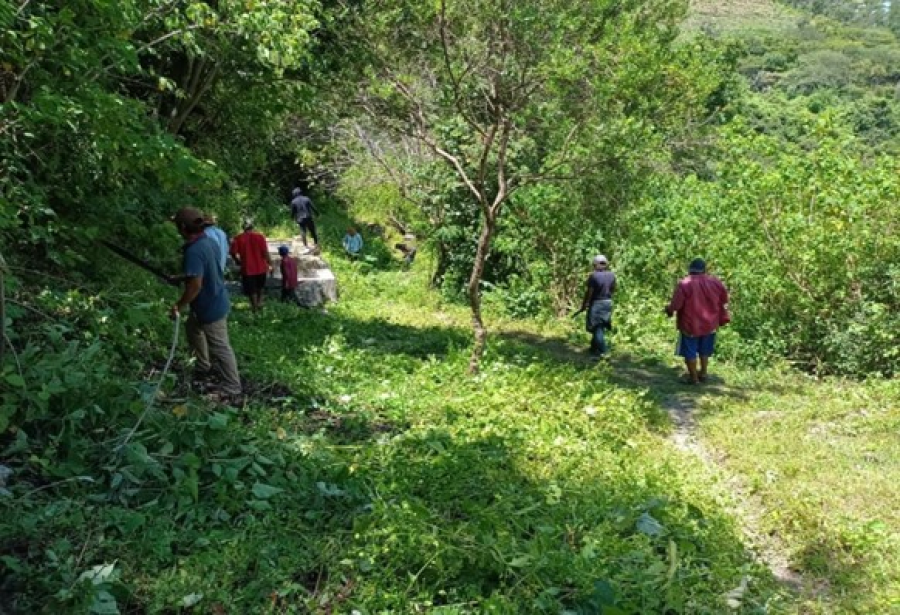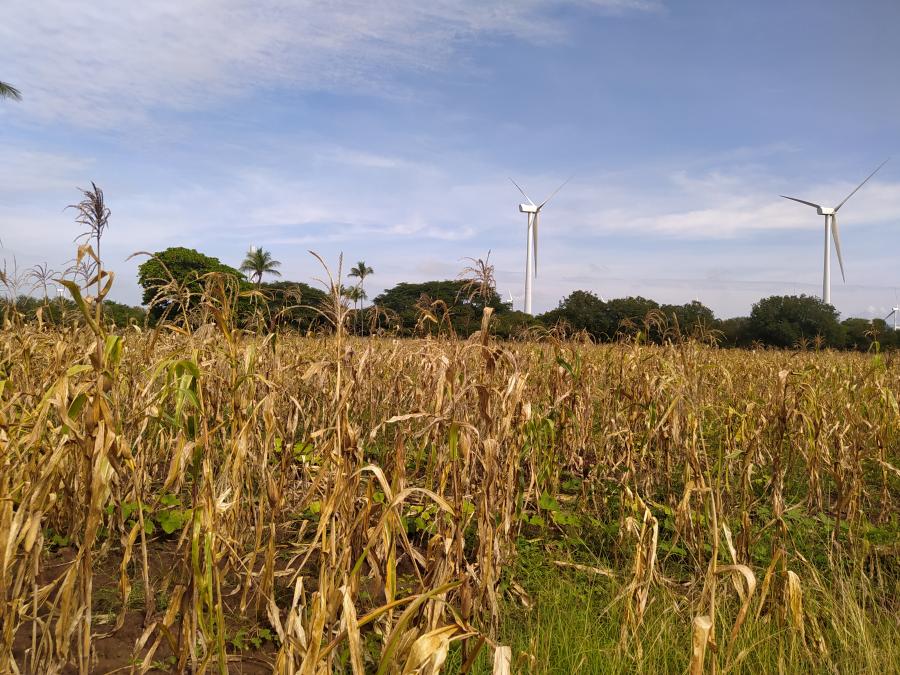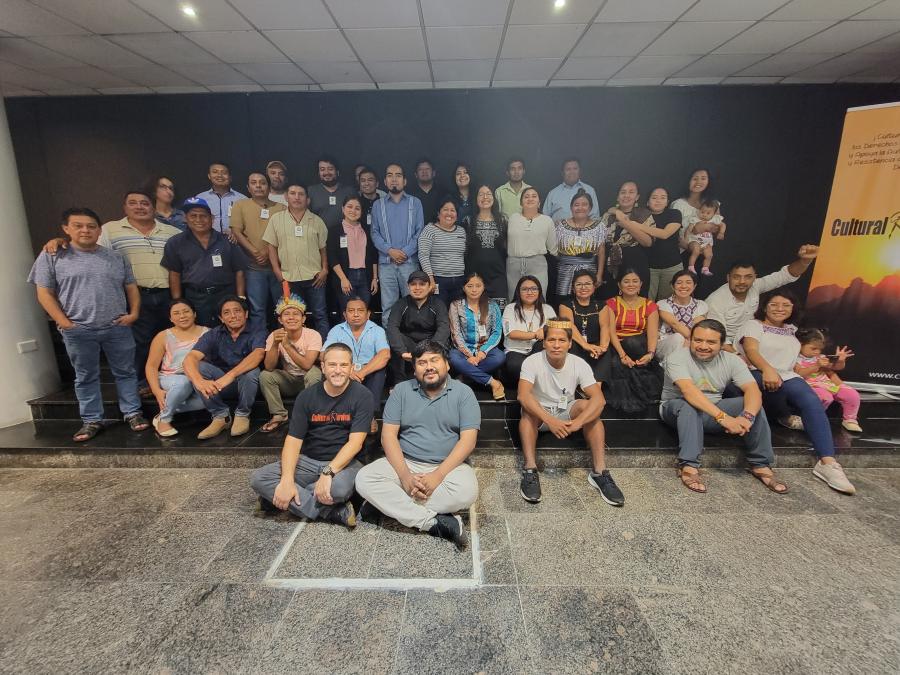These comments are based primarily on field experience and study, spanning a period of about 25 years, in only one of Chiapas' many Indian communities: San Juan Chamula, a Tzotzil-speaking municipio, together with a number of its emigrant colonies throughout the state. Although this is a large and influential Indian community, with over 100,000 people, it has apparently not been directly involved in the current uprising. In fact, it is one of several Highland Chiapas communities that have formally asked the Mexican government for protection from the insurgents. The reason, as explained more fully below, lies in the close alliances between the elite leadership of traditional Indian communities and the Mexican state.
My most recent research has focused on the diaspora of Chamula into dozens of new communities throughout the state, some of which are located in the eastern lowland areas that do appear to have been closely linked to the activities of the insurgents. These new settlements are diverse in character, founded by Chamulas who have left their home municipo both voluntarily, as agrarian colonists, and involuntarily, as political and religious exiles. Some of the latter include the thousands of Protestant converts expelled from Chamula since 1965, ostensibly because they undermined traditional religion but in fact because they challenged the traditional cacique system.
Protestant evangelical missions, funded in large part by organizations based in the United States, have been active in Highland Chiapas since the 1950's. Their labors began in 1965 in San Juan Chamula. After initial successes, their converts were driven out at gun point in the 1970's and 1980's, for Chamula's highly centralized, cacique-controlled municipal government correctly perceived them to be a threat to its authority. Among other "offenses", they refused to participate in, or pay taxes to support, the traditional religious festivals. Furthermore, they refused to purchase or consume liquor or beer, the sale of which was (and still is) an important source of income for town officials. Thousands of these Protestant exiles now reside in new communities that lie outside of their home community, all over the state of Chiapas. Other Highland Chiapas communities have also responded to Protestant converts' anti-establishment behavior by expelling them. These Protestant refugees figure significantly in the demographic configuration of displaced persons in the state. Indeed, many of the areas where the support for the Zapatista insurgency is strongest have population composed not of "traditional Mayas," but of recently converted Maya Protestants and of Mayas who have responded in various ways to the proselytizing of Roman Catholic catechists associated with Liberation Theology.
The Indians of Chiapas - constituting approximately one half of the state's population - are neither culturally nor linguistically homogeneous, nor do they all share similar social and economic circumstances. Thus they do not have a unified political agenda in the current conflict. While the rebellion bears an unquestionable Maya Indian identity, it cannot be said to carry the banner for all Indians in Chiapas.
The rebels are indeed Maya in origin, ethnicity and language, yet they are, in a sense, twice-cursed and (perhaps twice-politicized), for most of them are both Indians and displaced persons - individuals who have been obliged to seek their destiny as defacto refugees from their Indian communities of origin. Many have left their communities of origin not by choice but out of desperation that is linked sometimes to poverty and sometimes to political and religious exile.
Many of those who are identified as "rebels" in the current conflict are in fact ordinary farmers who have been displaced from their communities of origin. They have sought, through legal means, to obtain land for subsistence farming, a goal which was consecrated in Article 27 of Mexico's 1917 Constitution. Their goal - to obtain land for subsistence agriculture - has been frustrated by the Mexican government's diminished interest in agrarian reform. The government's priorities have shifted to "northerly" interests in corporate development for the export economy (a policy which of course is not unrelated to the politics of NAFTA).
The Zapatista rebels are thus Indians who have believed in Mexico's public Revolutionary rhetoric, but who now feel utterly betrayed by the nation's revised priorities. Their concerns are valid, for the constitution was recently amended to allow the sale of ejido-chartered land, even to foreigners - a policy that would cause Emiliano Zapata to roll over in his grave.
This is a highly volatile political issue because the ejido is the collective land tenure system that has formed the foundation of Mexico's post-Revolutionary agrarian reform policy, as stipulated in Article 27 of the 1917 Constitution. According to this system, 20 petitioners were able to claim contiguous plots of land, at no cost, from state-owned or large privately held tracts. Intended to be for their own subsistence, ejido-chartered land belonged to the ejidatarios (farmers) only on the condition that they use it; it could not be sold or mortgaged. This agrarian policy, which has resulted in the creation of hundreds of ejido-chartered agrarian communities since the 1930's, was reformulated in 1992, thus effectively ending it. Whereas before certain guarantees for inalienability existed, ejidos may now, by vote of their constituencies, sell, rent or mortgage their land; furthermore, the prospect for new land grants is not bright. The mood of pessism among Chiapas' rural poor, therefore, has ample foundation.
In addition to the classic peasant grievances that lie behind the current rebellion, there are other forces - also fundamentally linked to government-Indian relations - that help to account for the present mood of social unrest: the authority structure in Indian municipios.
All over Chiapas, predominantly Indian municipios are managed by a relatively wealthy oligarchy of Indian elites who are economically and politically allied with Mexico's ruling national political party, the PRI (Partido Revolucionario Institutional). This pattern of elite control of Indian communities has a long history that began with Spain's self-conscious creation of a colonial society that ideally consisted of two "republics", one for the one for Indians, and one for Spaniards and their descendents, later to include mestizos, those of mixed Indian and European parentage. Separate civil and ecclesiastical laws applied to the two types of communities, and every effort was made to keep the communities demographically isolated from each other (Indians in the countryside and Spaniards in the towns and cities).
This de facto segregation of the Indians was enforced by coopting the deposed Indian elites with property, privileged status, personal exemption from tribute and labor service, and sometimes formal education. In exchange for these privileges, the caciques were expected to serve as Crown representatives in the Indian communities by facilitating regular payment of tribute and provision of Indian labor from their own subalterns. This pattern of Indian elite authority supported by and identified with the state survived the separation of the African colonies from Spain and has retained its essential form to this day.
In post-Revolutionary Chiapas, this traditional pattern was in essence reconstituted by state laws promulgated in the 1930's, which required Indian communities to have - in addition to their traditional administrative apparatus (itself a creation of colonial policy) - an Ayuntamiento Constitutional of elected civil authorities. These included escribanos (bilingual "scribes") who served as intermediaries between the largely monolingual Maya-speaking local communities and the state and national authorities. In effect, this policy created a new elite class of young men who were often draw from established elite families.
These escribanos and their successors - the current generation of caciques - have exerted direct and indirect influence over local affairs throughout Chiapas to this day. In some cases, the Indian caciques have become wealthy entrepreneurs who hold important income-producing properties such as soft drink and beer distribution monopolies. Being wealthy, they are also sources of loans - often the only source of loans in the Indian communities - for which they charge usurious rates of interest. Others own small fleets of trucks on which everyone depends for personal transportation and access to markets to sell their produce and other items, such as charcoal, pottery and furniture.
In still other cases, the caciques and their allies hold direct power in the local civil and religious hierarchies. Since they have both political and economic power, they are in a position to encourage maintenance of ethnic separatism and autonomy in ritual and religious practices. State and national officials are willing to tolerate, even encourage, local expression of "Indianness" as long as the oligarchy cooperates with PRI. In a sense, this has been one benefit of the cacique system: it has enabled many Mayan municipios in Chiapas to maintain their cultural and religious heritage.
It is ostensibly for this reason that thousands of Maya Protestant converts have lost their landholdings in certain Indian communities since 1965. They have been forcibly expelled as disruptive "non-traditional" cultural influences. In fact the Protestant converts have been the most likely to challenge traditional cacique authority, and the caciques have hidden behind state protection of traditional religion to get rid of threats to their political monopoly. State and federal officials - acting to protect the cacique system which has worked so well to keep the Indian communities in line - have generally looked the other way when Protestant converts have asked them to address their grievances against the caciques.
Recently converted evangelicals are a major demographic presence in those eastern lowland areas that have been associated with the Zapatista grassroots organization. While Indian Protestant converts have not yet been directly linked to the Zapatista movement, such an association would not be surprising, for they have been involved in many violent confrontations with Indian oligarchies and their government allies over the past 20 years. The bloodiest and most recent of these encounters occurred in April of 1992 on the outskirts of San Cristobal. On this occasion, both Protestant and PRI-allied Chamula traditionalists were armed, and the fight resulted in several casualties and many wounded.
Since than the situation has continued to deteriorate, creating an embarrassing dilemma for the government and a growing community of disaffected Protestants. Many of them are armed and willing to fight both the caciques and the government officials, whom they accuse of dispossessing them. Numbering in the many tens of thousands, their presence in Chiapas testifies to the price people are willing to pay - often involving loss of land holdings and forced exile - in order to escape the clutches of the cacique-ruled Indian municipios. Since Protestants have become, in effect, displaced persons, they surely contribute to the ambiance of social discontent and instability that characterizes the region as a whole.
The recent uprising in Chiapas has many plot lines with a number of competing interests that are not easy to identify. The wildly heterogeneous composition of the large Chiapas Indian population constitutes a source of this complexity. There are dozens of different communities, speaking different Maya languages and many different dialects of these languages, with striking differences in wealth and political power within each of these communities.
Tens of thousands of landless economic, political and religious refugees from Chiapas Indian communities (and more recently from Guatemala) add to the complex panorama of social discontent and instability in modern Chiapas. Undoubtedly, the grassroots support for the recent insurgency movement derives, in part, from the great concentration of such displaced individuals in Chiapas. Many of them have nothing to lose, and perhaps something to gain, through political activism.
One force which has contributed to this complex plot has been the highly effective alliance between the PRI and local Indian traditional elites. While it may have contributed to the insurrection by its inherent inequality and exploitative policies, it has also enabled a number of Chiapas municipios to maintain a strong Indian identity and relative autonomy from the state government. These side benefits of the cacique system have created the apparent paradox of some Chiapas Indian communities asking the Mexican army for protection from Indian insurgents.
Surprisingly, one interesting element that is not present in the rhetoric of the current insurrection is the religious one: specific religious symbols and causes that might have been used to justify the insurrection are conspicuously absent. This absence is noteworthy because of Chiapas' long history of violent political movements originating in Indian communities, from the Tzeltal Rebellion of 1712 to the recent Protestant Evangelical conflicts. Most of these movements have invoked a particular interpretation of Christian or Maya religious symbols to justify Indian militancy. These symbols are absent now, unless of course one regards the symbol of Zapata himself as a kind of apotheosized embodiment of twentieth century Revolutionary ideology.
While much of the grassroots organizing behind the present revolt was initially facilitated by the humanitarian vision and reform-oriented policies of Bishop Samuel Ruiz, assisted by the labors of many like-minded lay catechists, the movement does not today bear any clear link to the Christian base communities that were envisioned by proponents of Liberation Theology. Rather, both Catholic and Protestant Mayas of diverse ethnic origins have been involved, motivated by economic and political causes devoid of any specific religious charter.
The impetus for the insurgency comes primarily from areas of relatively new and highly contested agrarian settlements where old ethnic, linguistic, political and religious loyalties have weakened as people have come to identify themselves as landless, increasingly desperate, rural poor. The pattern of pan-Indian solidarity here is strikingly absent from the more circumscribed Indian communities of the Highlands, with highly localized language, custom, dress and political allegiances.
In conclusion, I want to emphasize two points:
First, the causes of the Zapatista movement are at once local, regional, and international. It is just as naive to label it the work of "outside instigators" - Cuban, Guatemalan, and other - as it is to call it totally circumscribed and local, as President Salinas recently did in an effort to assure the developed nations that it would not hinder Mexico's progress to First World economic status.
Second, it is increasingly clear that a solution to the problems of Chiapas must begin with the realization that both Indians and mestizos, inside and outside of Chiapas, are now demanding a democratization of Mexico for more than half a century is no longer viable. The Zapatistas may indeed be forcing a solution to a political system that is in need of reappraisal and reform.
Article copyright Cultural Survival, Inc.



